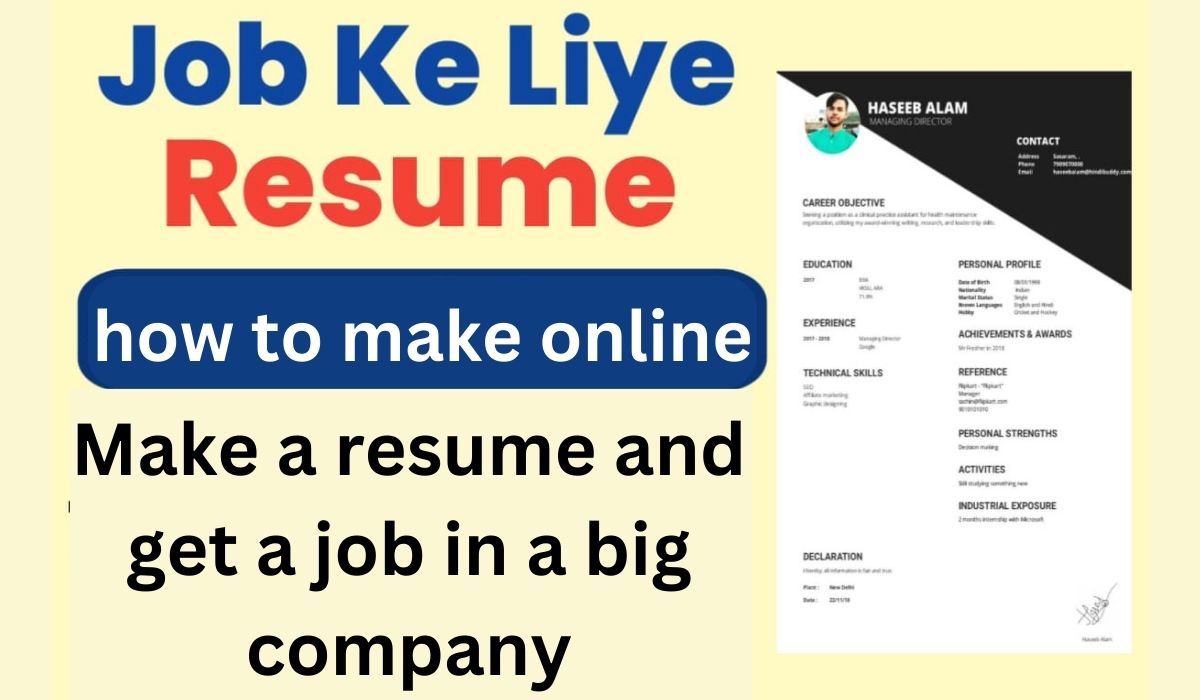In today’s fiercely competitive job market, your resume is your golden ticket to landing your dream job. It’s not just a document; it’s your chance to shine and make a lasting impression. In this comprehensive guide, we’ll walk you through the process of creating a unique and compelling resume that will set you apart from the crowd.

Table of Contents
- Introduction
- Understanding the Purpose of Your Resume
- Choosing the Right Resume Format
- Structuring Your Resume
- 4.1. Contact Information
- 4.2. Crafting an Engaging Summary or Objective
- 4.3. Showcasing Your Professional Experience
- 4.4. Highlighting Your Education
- 4.5. Emphasizing Your Skills
- 4.6. Additional Sections
- Formatting and Design Tips
- 5.1. Font and Typography
- 5.2. Effective Use of Bullets and White Space
- 5.3. Incorporating Visual Elements
- Proofreading and Editing
- Customizing Your Resume for Each Job Application
- Conclusion
- Frequently Asked Questions
Introduction
Your resume is your ticket to the job of your dreams. It’s more than just a list of qualifications; it’s your opportunity to shine and stand out from the competition. In this article, we’ll guide you through creating a resume that not only captures attention but leaves a lasting impression on potential employers.
Job Ke Liye Resume Kaise Banaye
| Document Name | Resume (CV) |
| Article Name | Job Ke Liye Resume Kaise Banaye |
| How to make a resume for a job? | Read Article Properly |
| Article Type | New Update |
Understanding the Purpose of Your Resume
Before delving into the details, it’s crucial to understand the primary purpose of your resume:
- Showcasing Your Qualifications: Your resume should effectively display your skills, qualifications, and professional experiences.
- Grabbing Attention: It must grab the reader’s attention within seconds.
- Persuading Employers: Your resume should convince employers that you’re the perfect fit for the job.
- Securing Interviews: Ultimately, it should lead to job interviews where you can demonstrate your capabilities.
Choosing the Right Resume Format
The format of your resume plays a pivotal role in presenting your information. You have options like chronological, functional, and combination formats. The key is to select the one that best aligns with your career stage and emphasizes your strengths.
Structuring Your Resume
4.1 Contact Information
Start with your contact information, including your full name, phone number, email address, and, if applicable, your LinkedIn profile.
4.2 Crafting an Engaging Summary or Objective
Your resume should kick off with a concise yet compelling summary or objective statement that provides a snapshot of your career goals.
4.3 Showcasing Your Professional Experience
List your work history in reverse chronological order, detailing your job titles, company names, employment dates, and key responsibilities and accomplishments.
4.4 Highlighting Your Education
Give prominence to your educational background, mentioning your degrees earned, institutions attended, graduation dates, and any noteworthy academic achievements.
4.5 Emphasizing Your Skills
Allocate a dedicated section to showcase your skills, encompassing both technical and soft skills tailored to the job you’re targeting.
4.6 Additional Sections
Consider including supplementary sections such as certifications, awards, publications, or volunteer experiences to enrich your resume further.
Writing Your Resume Content
5.1 Crafting an Engaging Summary or Objective
Your summary or objective should be concise, yet captivating, providing a glimpse into your career aspirations.
5.2 Showcasing Your Professional Experience
When describing your professional experience, utilize strong action verbs and quantify your achievements. Explain how your contributions positively impacted your previous employers.
5.3 Highlighting Your Education
In the education section, emphasize relevant coursework or projects that align with the job you’re seeking.
5.4 Emphasizing Your Skills
The skills section should spotlight both technical and interpersonal skills, aligning them with the specific job requirements.
5.5 Including Additional Sections
Consider incorporating sections that underscore your commitment to personal and professional growth.
Formatting and Design Tips
6.1 Font and Typography
Choose a professional and easily readable font, and maintain consistency throughout your resume.
6.2 Effective Use of Bullets and White Space
Utilize bullet points to make your content easily scannable and create an organized layout with ample white space.
Physics Wallah Recruitment 2023-2024: Your Path to Success
mahjong-card-2022-pdf-free-download
6.3 Incorporating Visual Elements
Introduce subtle design elements like lines or shading to enhance the overall visual appeal.
Proofreading and Editing
Before submitting your resume, engage in a thorough proofreading and editing process to eliminate errors and ensure clarity.
Customizing Your Resume for Each Job Application
Tailor your resume to each job application by aligning it with the specific job requirements and incorporating relevant keywords.
Conclusion
Crafting an impressive resume is a pivotal step in your job search. By following the guidance provided in this article, you can create a resume that effectively highlights your qualifications and significantly improves your chances of securing your dream job.
Frequently Asked Questions
- How long should my resume be?
- Ideally, one page is suitable for individuals with less experience, while those with extensive experience can extend it to two pages.
- Should I include references on my resume?
- It’s not necessary. You can provide references upon request during the interview phase.
- Is a cover letter essential?
- While not obligatory, a well-crafted cover letter can enhance your job application.
- How often should I update my resume?
- Consider updating your resume whenever you acquire new skills, accomplish significant projects, or change job roles.
- What file format is best for online submissions?
- PDF is the recommended file format for online resume submissions to maintain formatting consistency.